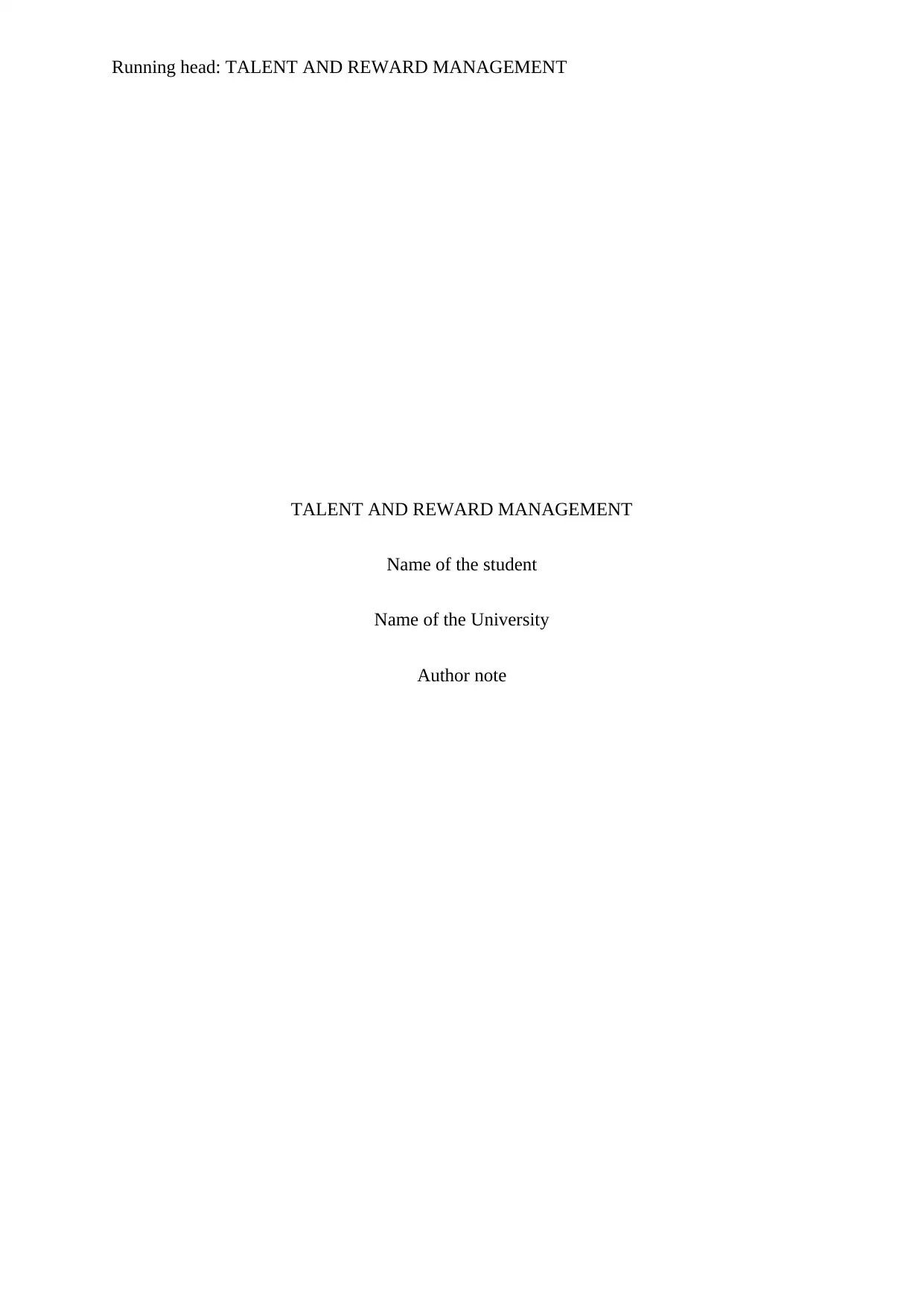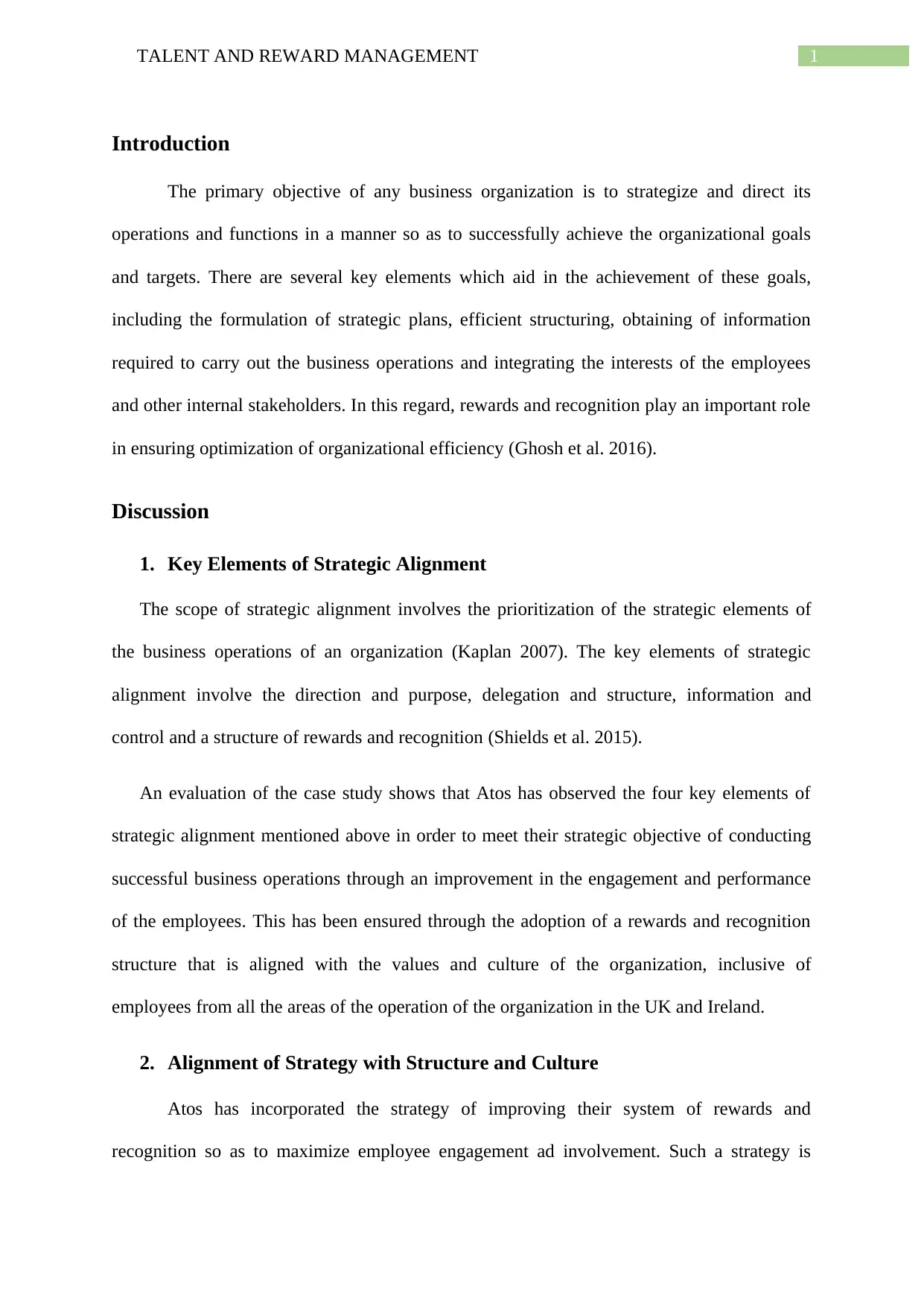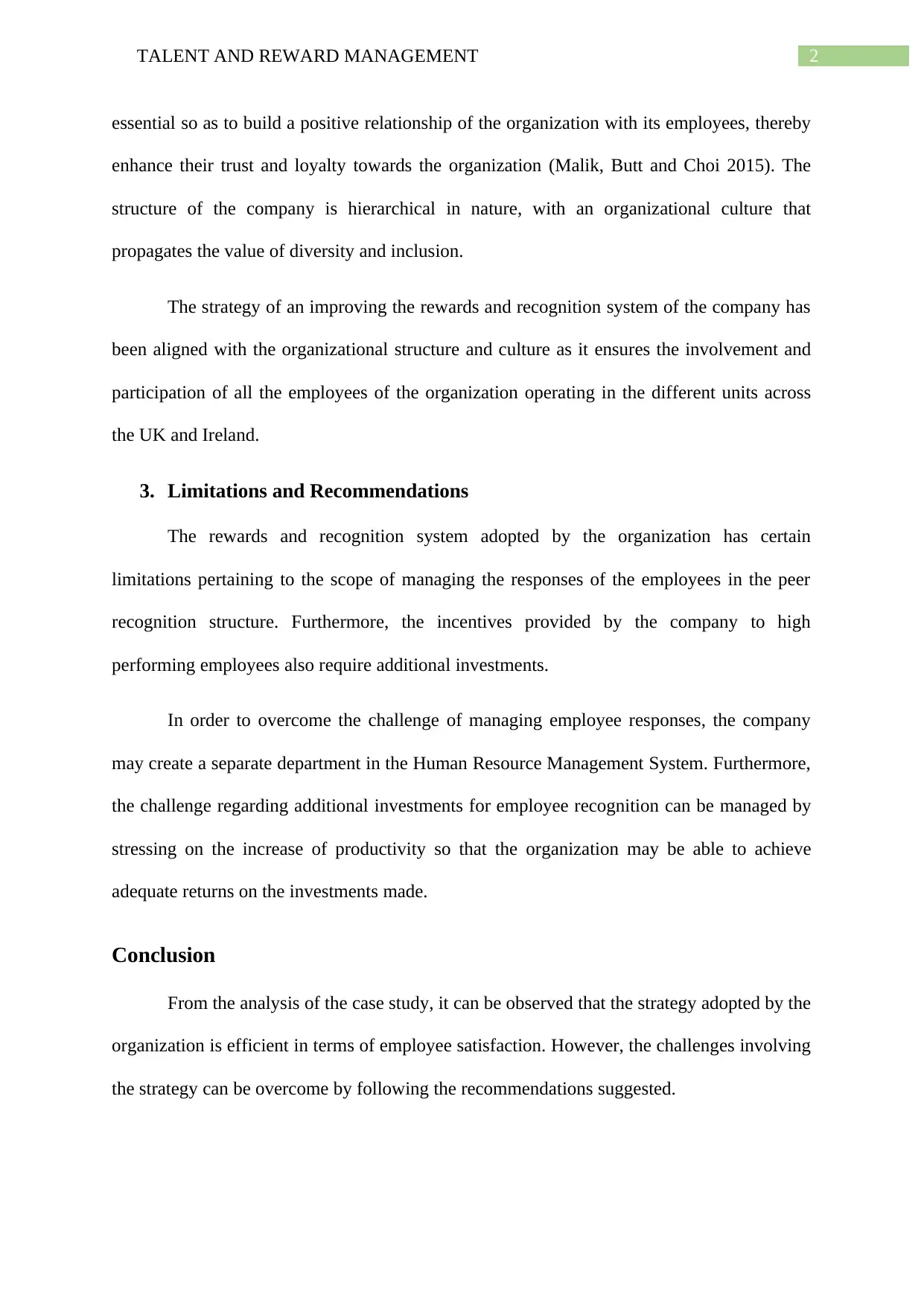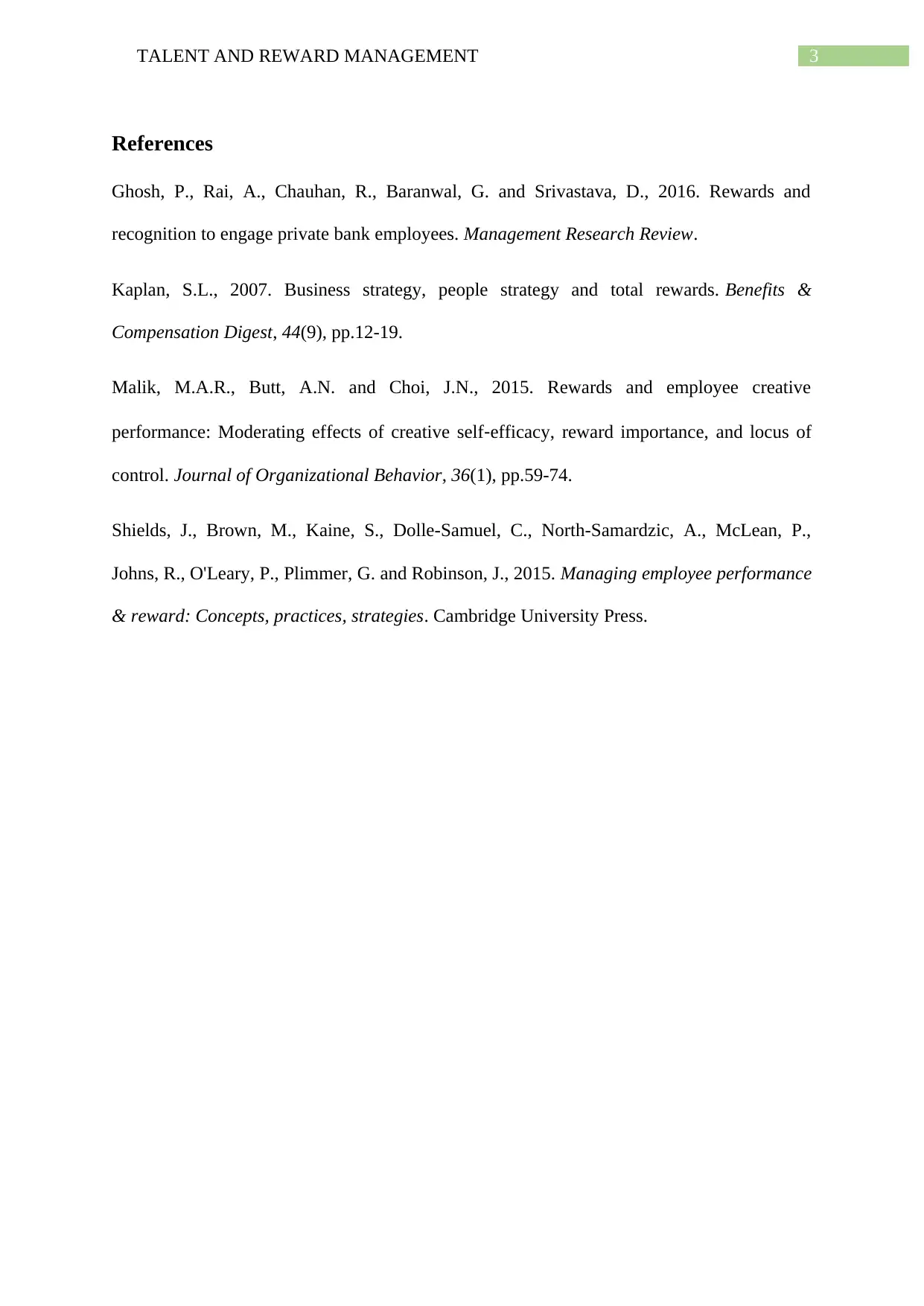Talent and Reward Management Report: Analysis of Atos's Strategy
VerifiedAdded on 2022/08/30
|4
|737
|18
Report
AI Summary
This report provides an analysis of talent and reward management strategies, with a focus on strategic alignment, employee engagement, and organizational performance. The report begins with an introduction that highlights the importance of aligning organizational goals with employee interests through effective reward and recognition systems. Key elements of strategic alignment, including direction and purpose, delegation and structure, information and control, and reward structures, are discussed. The report then examines the Atos case study, illustrating how the company has implemented these elements to improve employee engagement and performance. The alignment of strategy with organizational structure and culture, particularly Atos's hierarchical structure and inclusive culture, is also explored. Finally, the report identifies limitations of the current system and offers recommendations for improvement, such as creating a dedicated HR department and focusing on productivity to justify investments in employee recognition. The conclusion emphasizes the efficiency of the implemented strategy while acknowledging the need for addressing identified challenges.
1 out of 4











![[object Object]](/_next/static/media/star-bottom.7253800d.svg)